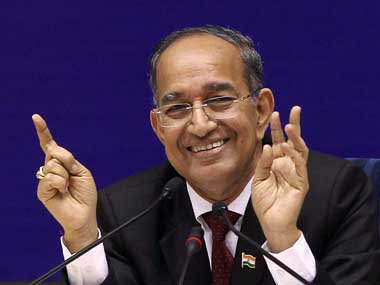This is a tricky question indeed, but highly relevant in today’s context: how the Election Commission’s Model Code of Conduct, which came into effect from Wednesday, would affect the Indian diplomatic establishment? What will be the dos and don’ts for the Ministry of External Affairs from today till the elections are over and a new government takes over? Can the MEA effect transfers of its senior officials and appoint new ambassadors? Can India sign new treaties with foreign countries? Can the Indian Prime Minister undertake a foreign visit during this interregnum and sign a game-changing agreement with a foreign power (Siachen agreement with Pakistan, for example)? [caption id=“attachment_1422263” align=“alignleft” width=“380”]  Chief Election Commissioner VS Sampath. PTI.[/caption] Well, here is a decoder. The impact of the EC’s Model Code of Conduct on the MEA, the nodal ministry for conducting Indian diplomacy with the world, can be described in just half a line: the MEA will remain unscathed. This is largely because the entirety of MEA work pertains to external affairs, having virtually nothing to do with anything that may influence an election process. While a state government will have to seek prior approval of the EC before transferring an SDM or even an SHO, and will be hauled over coals by the EC if it were to make fresh transfers or appointments; the MEA can transfer a joint secretary or even a secretary-level officer without batting an eyelid. During this period (till the new government takes over) the UPA government is completely free to run its foreign policy the way it deems fit in the larger national interest. The Prime Minister as well as his ministerial colleagues can undertake as many foreign visits as are important because this is government work, and foreign policy is work in progress. The converse is equally true: foreign dignitaries too can visit India without any bar or fear of violation of the model code of conduct. As an evidence of it, the United States Assistant Secretary of State for South and Central Asia Nisha Biswal on her maiden visit to India in her current capacity since Tuesday, held official meetings in New Delhi with her Indian interlocutors on Wednesday, well after the model code of conduct was promulgated. The two sides discussed the current state of the bilateral relationship, and considered measures to achieve progress in resolving to mutual satisfaction, issues that have emerged on either side in recent months. Both sides reaffirmed the priority attached to the India-US strategic partnership, and discussed ways in which existing dialogue mechanisms could be energized to generate fresh momentum over the next few months. When she called on Foreign Secretary Sujatha Singh, she was pointedly told to expeditiously resolve “outstanding issues” (read the issue of Devyani Khobragade’s treatment in the US), to enable both sides to focus their energies on the substantive and strategic issues that underpin the vital Indo-US partnership. Biswal will have more meetings on Thursday to obtain a broader briefing of India’s perspective of the region and beyond. The reason why the Biswal episode was discussed at some length here, was to show that diplomacy is a continuum and a work in progress. Biswal landed in India despite knowing that India is in the cusp of general elections. Moreover, US Energy Secretary Ernest J Moniz will be here on 10 March for the bilateral Energy Dialogue, days after the model code of conduct kicked in. The top US minister will be arriving in polls-bound India, despite full knowledge of the fact that the UPA government won’t be in a position to negotiate long-term measures. Also, the UPA government will be well within its constitutional obligations to sign new international agreements, even during this interregnum. One notable example is going to be Kudankulam Nuclear Power Project’s (KNPP) third and fourth units, contracts for which are going to be signed with Russia later this month. The Indian government will sign the contracts for KNPP three and four, despite the fact that each unit is likely to cost the nation $2.5 billion. Theoretically, Prime Minister Manmohan Singh is free to visit Pakistan, and even sign an agreement for resolving such age-old disputes with the neighbour as Siachen or Sir Creek if work on such agreements has been going on for some time, though nothing of this nature is in the realm of possibility, even in the distant future. The reason is that diplomacy is a work in progress, and today’s agreement signing event is the result of years of diplomacy, to-and-fro visits and hard work. That is why there will be no question mark on Indo-Russian agreement signing ceremony on KNPP. That is why the MEA will be well within its powers to appoint a new ambassador (presuming that the Indian government must have sent the necessary paper work to the foreign host government months ago) or effect new appointments or transfers. The writer is a New Delhi-based Firstpost columnist and a strategic analyst who tweets at @Kishkindha.
The impact of the EC’s Model Code of Conduct on the MEA, the nodal ministry for conducting Indian diplomacy, can be described in half a line: it will remain unscathed.
Advertisement
End of Article
Written by Rajeev Sharma
Consulting Editor, Firstpost. Strategic analyst. Political commentator. Twitter handle @Kishkindha. see more


)

)
)
)
)
)
)
)
)



